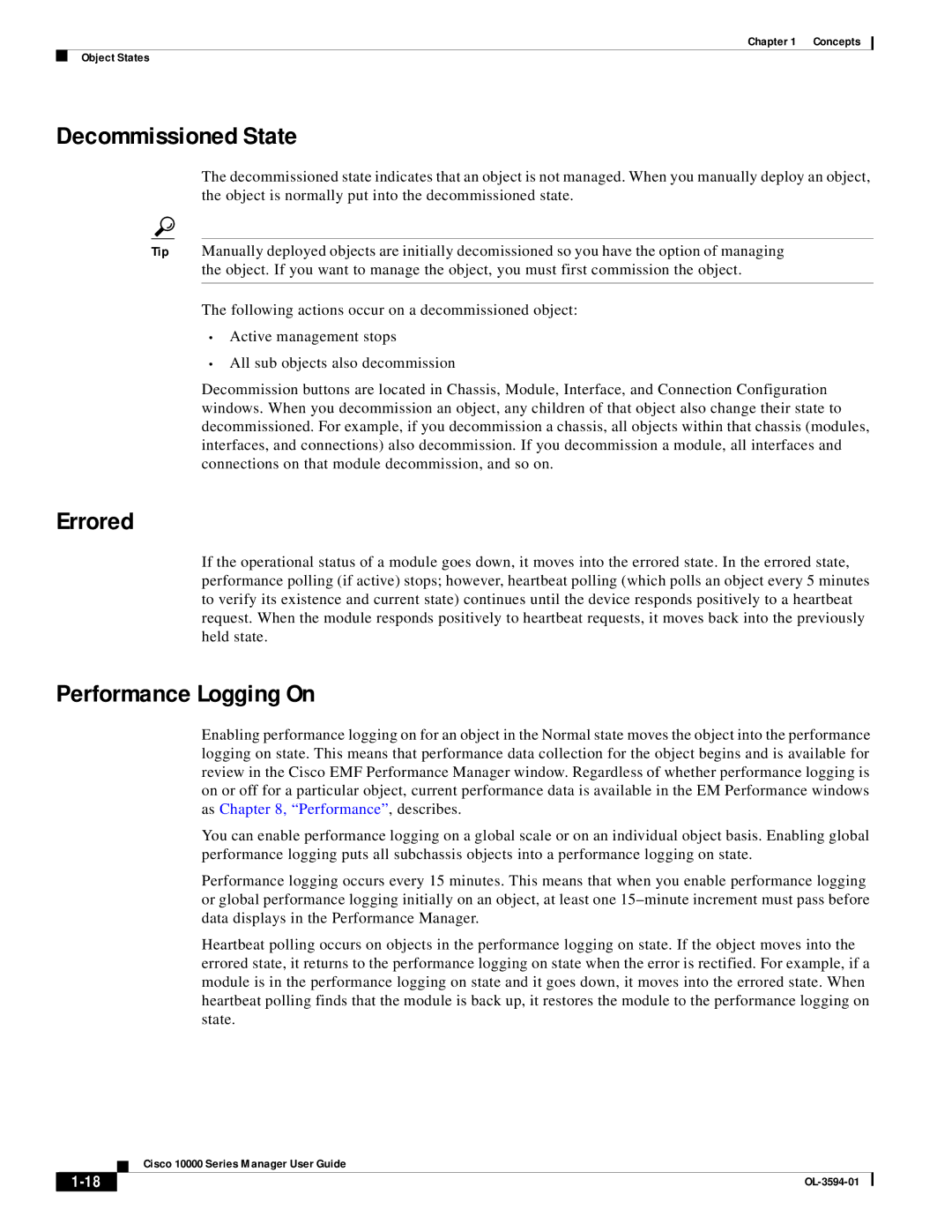
Chapter 1 Concepts
Object States
Decommissioned State
The decommissioned state indicates that an object is not managed. When you manually deploy an object, the object is normally put into the decommissioned state.
Tip Manually deployed objects are initially decomissioned so you have the option of managing the object. If you want to manage the object, you must first commission the object.
The following actions occur on a decommissioned object:
•Active management stops
•All sub objects also decommission
Decommission buttons are located in Chassis, Module, Interface, and Connection Configuration windows. When you decommission an object, any children of that object also change their state to decommissioned. For example, if you decommission a chassis, all objects within that chassis (modules, interfaces, and connections) also decommission. If you decommission a module, all interfaces and connections on that module decommission, and so on.
Errored
If the operational status of a module goes down, it moves into the errored state. In the errored state, performance polling (if active) stops; however, heartbeat polling (which polls an object every 5 minutes to verify its existence and current state) continues until the device responds positively to a heartbeat request. When the module responds positively to heartbeat requests, it moves back into the previously held state.
Performance Logging On
Enabling performance logging on for an object in the Normal state moves the object into the performance logging on state. This means that performance data collection for the object begins and is available for review in the Cisco EMF Performance Manager window. Regardless of whether performance logging is on or off for a particular object, current performance data is available in the EM Performance windows as Chapter 8, “Performance”, describes.
You can enable performance logging on a global scale or on an individual object basis. Enabling global performance logging puts all subchassis objects into a performance logging on state.
Performance logging occurs every 15 minutes. This means that when you enable performance logging or global performance logging initially on an object, at least one
Heartbeat polling occurs on objects in the performance logging on state. If the object moves into the errored state, it returns to the performance logging on state when the error is rectified. For example, if a module is in the performance logging on state and it goes down, it moves into the errored state. When heartbeat polling finds that the module is back up, it restores the module to the performance logging on state.
Cisco 10000 Series Manager User Guide
| ||
|
